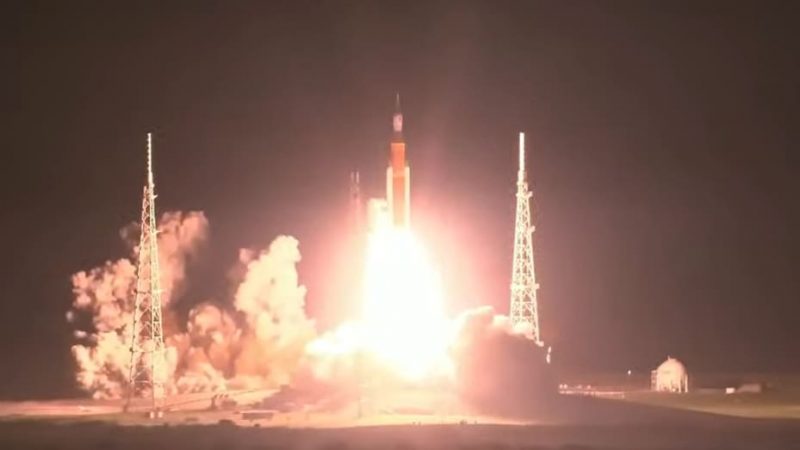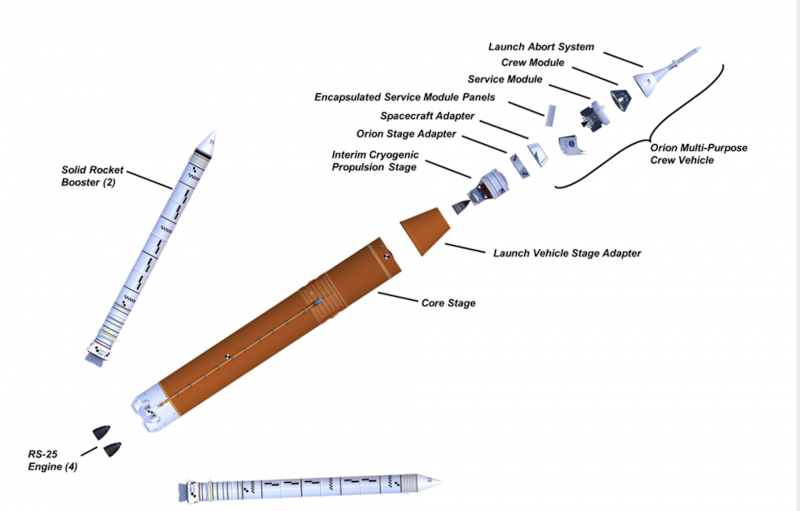
Artemis 1 launches successfully
And we have liftoff!
NASA’s Space Launch System rocket, carrying the uncrewed Orion spacecraft, lifted off from Launch Complex 39B in Florida at 1:47 a.m. EST.
After many delays, Artemis 1 is headed to the moon. The Orion capsule launched successfully atop the Space Launch System (SLS) on November 16, 2022. The rocket lit up the dark night in the early morning hours at Kennedy Space Center in Florida. This mission is the first step in the goal of returning humans to the surface of the moon. Artemis 1 is an uncrewed mission that will orbit the moon before returning to Earth.
Artemis 1 may not only be our first step toward the moon, but our first step toward leaving the solar system. NASA describes the Artemis 1 mission as:
… setting the stage for human exploration into deep space.
Artemis’s path to the moon
On this journey, Artemis 1 will be in space for 25 days, as it orbits the moon before returning to Earth.
The spacecraft will cover a total of 1.3 million miles (2.1 million km) during its mission. It will get as far away from Earth as 280,000 miles (450,000 km). NASA said:
Orion will stay in space longer than any human spacecraft has without docking to a space station and return home faster and hotter than ever before.
While the SLS rocket gets Orion into space, once the boosters are gone, the cryogenic propulsion stage (ICPS) will take over propelling Orion toward the moon. The ICPS is what pushes Orion out of Earth orbit.
At that point, about two hours after launch, the ICPS has done its job. When the ICPS is jettisoned from Orion, it will deploy 10 CubeSats with missions of their own at the moon and farther out in deep space.

When Artemis 1 reaches the moon
From here on, an ESA-designed service module powers Orion. At closest approach, Orion will come within about 60 miles (97 km) of the moon, on November 21, 2022. This will give the spacecraft a kick out past the moon. At its farthest, Orion will be 40,000 miles (64,000 km) beyond the moon. That’s farther than any Apollo mission by 30,000 miles (48,000 km).
The spacecraft will come quite close to the moon again on December 5, 2022. At its second close approach, it will get the gravity assist that sends it home. The Orion capsule will endure speeds of 25,000 mph (40,000 kph) as it enters Earth’s atmosphere. A system of parachutes will slow the capsule’s descent to 20 mph (32 kph) by impact. Finally, the Orion capsule will splash down into the Pacific Ocean off the coast of San Diego on December 11, 2022.
Artemis is rescheduled to launch on its journey to the Moon on Wednesday, Nov 16. This trajectory is slightly different than the previous ones. The lunar flyby that aims it back to Earth happens closer to lunar apogee. pic.twitter.com/uHuzIePnVS
— Tony Dunn (@tony873004) November 13, 2022
Bottom line: Artemis 1 launched successfully toward the moon on November 16, 2022, from Kennedy Space Center in Florida. Follow it on its journey to orbit the moon.
The post Artemis 1 launches to the moon uncrewed first appeared on EarthSky.
0 Commentaires